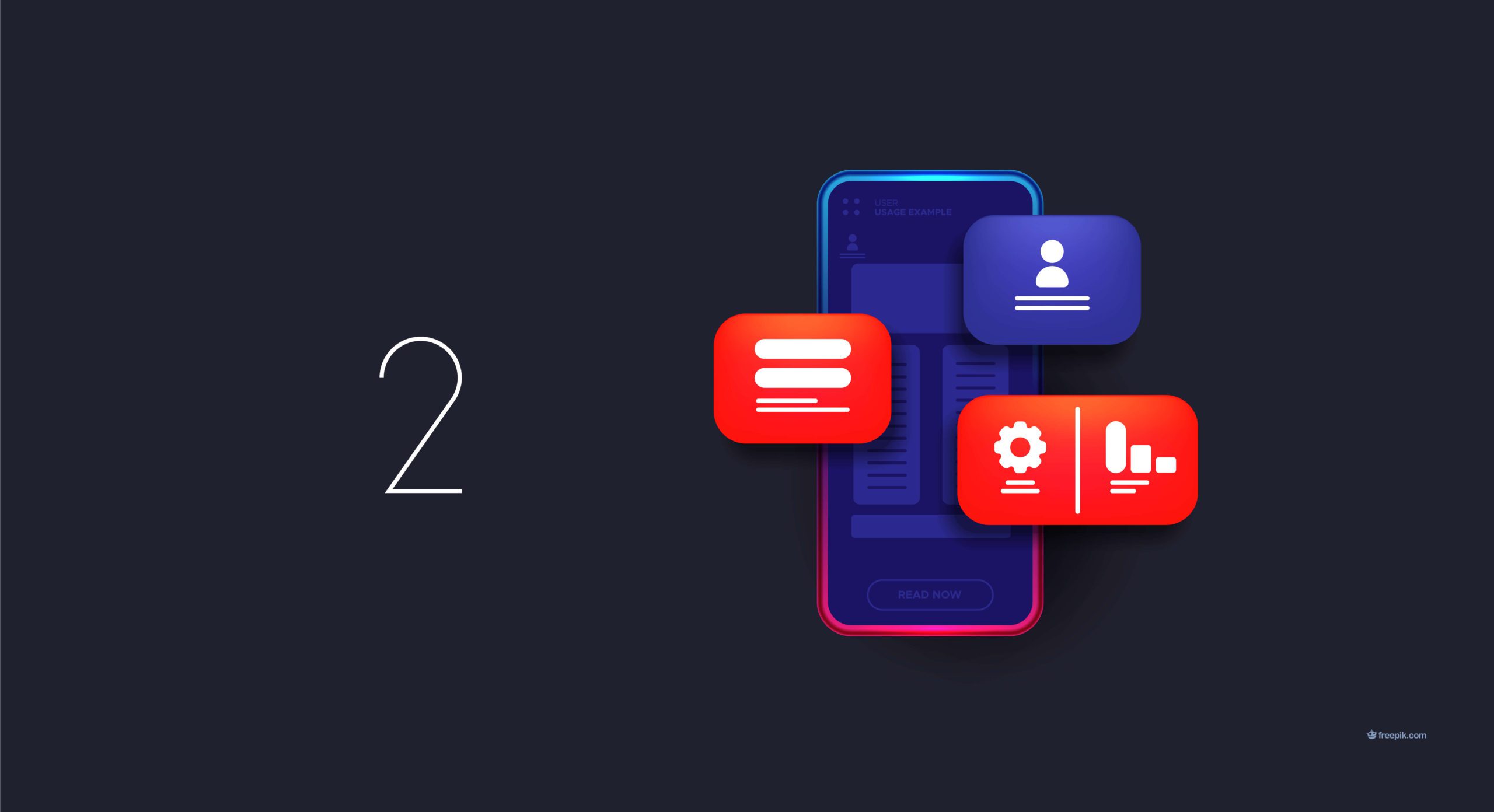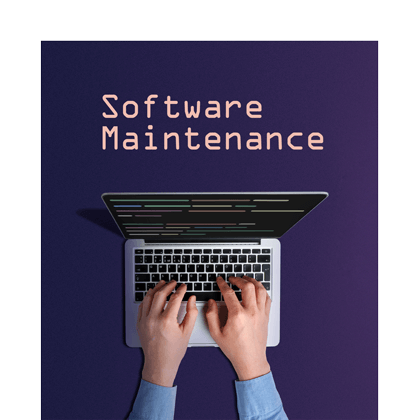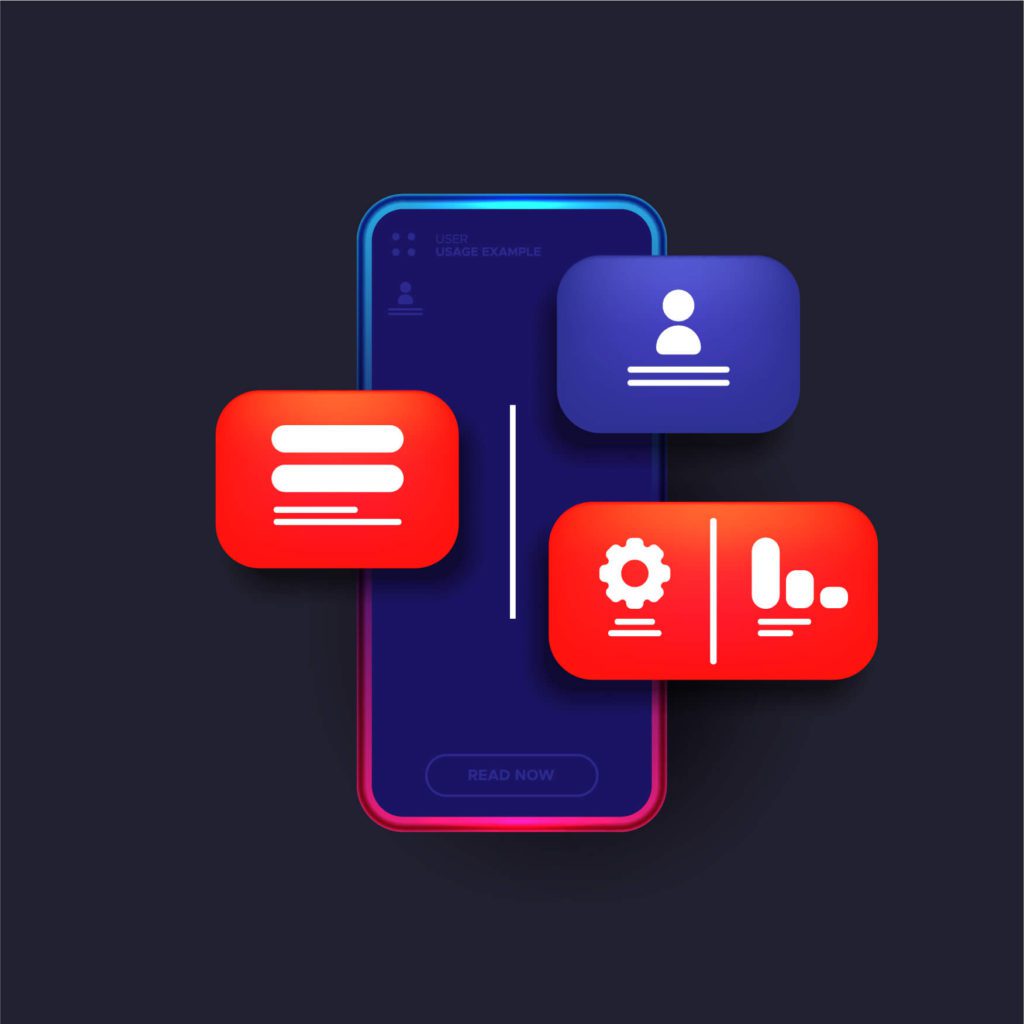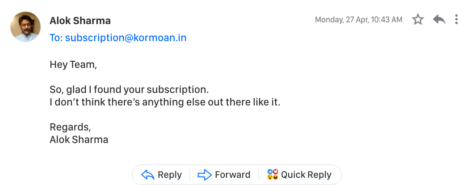
The process of creating an app is not an impromptu decision, it requires wholesome research acceptance of developers and the targeted users, as it is about their concern only, which is why the app is being created. For a chance if users find any glitch in the app, they take no time in deleting the app instantly, in the same instant way they downloaded it.
At Kormoan, we practice the app development process by dividing it into four phases: To Discover, Implement Designing, Practising Engineering, and Evaluating via scaling. By splitting into different processes it becomes helpful for us to address every problem and also to embrace every strategy and learnings we have experienced in almost 15 years.
Following Discovery is the Design Phase (Part-2 of building an app), which is considered essential to move ahead in the building process. It becomes impossible to work ahead without getting proper navigation by getting indulge in phase-1 of discovery.
To get the detailed information and to get expert insight, and how the Design Phase is structured and why, we speak with Kormoan Design Team Lead, Arushi Agarwal
Can you tell us how we can reach this point of having a defined system in a place?
Arushi: Before tasting success, we all go through the phase of hit and trials with a bountiful of errors. But we learn from errors and stand again to accomplish our goals. As a part of Kormoan it made us understand that learning from mistakes enhances our experiences and makes us reach a point that would work well both for us and our clients. Today we are at a point where our roots are strong with all the proven approaches and pass over testing time making us continue building our position at the topmost level.
If you ask me, keeping our system strong is not a single-handed thing. It is created with the passionate team coming together and building what’s beneficial for us. We all committed to staying consistent no matter what, using profitable tools and processes. We all remain in our practice of refining all the things based on what we learned from our projects. As we think if you have nothing left for the room for improvement, then you might not look just hard enough.
This is how the whole research phase—the Discovery Phase—takes place. At first, we researched the loopholes that were making us fail several times. This made us conclude that this was because of the incomplete information that was hindering us from proceeding towards the building process. Then we invested most of the time in getting detailed information about our client’s requirements. For starting implementing the design, we first need to be filled with the information. Therefore we invest our time but perhaps not in-depth. This made us discover a primary phase for connecting the designing team with the delivery team.
Arushi, can you provide us with some insight as to how that transition works?
Aruhsi: Assuming the client is working with us through the discovery phase. He/she will then work with our product manager and get connected with the designer as well. This makes the designer and client totally exposed to the interests of each other, exposing the client towards the details as to, what is actually building ? All such discussions, assumptions, and all the work done get incorporated into ballpark type frames having all the rough outline of upcoming designs that must have been prepared in phase-1 and has got all the recommendations from everyone involved -on the client’s side and our own.
As we enter the Design Phase after knowing all the requirements. The product manager got his duty of making sure nothing is forgotten, no feature is missed. Then with the designer of the team, we discuss all the specifications of the product to ensure all kinds of development issues that may arise in future. Expenses are made on advanced UI for an excellent outcome. Everything is fully analyzed from every side to get familiar with every minute detail on which our team members have to work on. This made the designer a clear picture of the process for the transition of ballpark frames into strong and exact manufacturing of the product.
Please can you quickly explain to us about the ballpark frames and how these ballpark frames differ from the actual designs?
Arushi: Ballpark frames are the ones that are considered rough skeletal ideas planned before the actual designs came into existence. This was the time when working with ballpark frames when we edit features and make sure that we are having all the key components. We structured the ballpark frames to have an idea about the functionality and layout of the product. Since they are equipped with varied colors and designs, our expert professionals make the ballpark frames in a way that they seem like actual designs to clients. The clients sometimes can’t help but focus on the look but we have to guide them to focus more on the functionality and the generic structure. Our clients after seeing the real picture of designs seem blown away and are much satisfied to see the actual designs. They get amused while experiencing the entire visuals coming altogether.
Sometimes only after looking at the ballpark frames, our clients become much more flattered as they really like the skeletal look before the finished product. This gives us immense confidence and feel proud for our ballpark frames.
How do you work on the communication between designer and client to ensure whether Kormoan’s standards are met?
Arushi: Primarily it totally depends on the nature of the product, followed by the designer and client mutual understanding and convenience. It is totally up to them on how much involvement they both want to acquire for the success of the project. We usually have meet-ups on Slack to have an overview of the work. Here the designer can easily have the meet up with the client to know about his preferences and the designer also gets to know what is his next agenda and where he needs to work on.
Kormoan’s ability to always remain organized and encourage transparency both internally and with clients is what is often highlighted in our client reviews. What are the most highly regarded aspects of the Design Process?
Arushi: We agree that we have a great internal collaboration and we encourage this through three main approaches. Firstly, we treat our team members as “friends”. In that sense, every team member has anyone or the other to lay on for any sort of work-related issue. They review the work in unity, can have mutual talks also at the same time they can supervise each other.
Secondly, to know about various feedbacks and critics, we have sessions. These sessions are done every two weeks. Here a group of designers talks about a particular screen or flow or design on which someone or the other currently indulged. This proves beneficial among designers for the sake of more context and also suggestions from different angles .
Thirdly, it is all about getting the updates as a team. This practice is done within two or three months for discussing any changes that to be followed. We recheck every decision in a way that it would not harm the Kormoan’s Design Handbook. Almost all sorts of talks related to designs including any estimation and approaches towards work are generally discussed among mates, clients, and the designers. To know if a certain approach can effect and how a specific approach works in general such kinds of updates are supervised. As some designers perform approaches and practise on them and if the approach works effectively, it is then carried out by everyone.
How do you work on updations on the Design Phase?
Arushi: Nothing is done unilaterally. Collaboration is the key when talking about the updating or changing processing of a product. We all discuss what needs to be changed and also how it can be done. We all agree at a common point that we don’t want to include outdated stuff. Since clients are much fascinated by the advancement of technologies, we always ensure incorporating new techniques to bring assurance and acceptability among the clients. Our team always makes themselves ready to face the advent by studying, experiencing, and learning immediately to deal with every query coming in the client’s way. In this way, for us, it’s natural to adopt the update and move forward seamlessly without being struck.
What are some common challenges of the designing phase while talking in terms of client communication and the work itself?
Arushi: Kormoan has experts and talented members in the team and all of them are highly creative from the other one. This comes with re- revising the designer projects due to the variations in resources and professionals as well. Therefore to handle such variations and also resisting the process of re- revising, the product manager supervises the process. Otherwise, it affects our timeline estimation, cost, resource as well and finally pushes the release date far away.
This situation seems quite tough, you see. During this time the product manager reminds the client that our designers are experts in their field. The problem arises when our professionals understand which styles and aspects work well together while clients get options to choose from and get more into looks. Here it becomes problematic as well, as the client unknowingly attempts to combine parts of one option with another. With having good knowledge the professional designer and engineer just know simply that the chosen designs won’t work together, this comes to a point where the client is made to understand the designs and communicate with them to ensure their understanding. If the client still disagrees then we practice the user testing of designs and also encourage collecting all the feedback. Finally when it concludes the same as that was guided by the experts, it becomes easier to proceed.
In some of the cases the client does not back down, but we do know deep down that his suggested changes will break all UX/UI rules, so we generally look at whether or not these potential changes do give value to the product and the end-user. If it doesn’t then it might be a waste of resources.
As long as I have experienced the client is always in search of trust. Whenever the client is in doubt he does not easily get ready with the decision made by our professional designer and seek confirmation. For this, we need to call for a “supervisor” to make him explain. This time our sessions, small programs come in for help. We get them reassured that the chosen design is examined by one who is another person from the design team. The design assurance or incorporating it into a product is not a result of personal preference. One person might be assigned for the project but the decisions are taken by multiple designer professionals and also the supervisors. Hence, it’s purely a team effort.
In addition to this, we also have the possibility of testing options applicable to the products and its targeted audience. This we utilize on a go-to basis. I am always overseeing the project with the entire team.
We already have many notable clients, what stands us apart from our peers?
Arushi: It is important to mention that we’re able to make both the UI and UX parts of the assigned project work together very productively. We are different from other companies who usually prefer focusing either on one of the lateral aspects. We on the other side are capable of taking both of them with functionality and have a more aesthetic feeling towards producing the product design. Since our team is expert in both of them. Well, it’s all about the experience for the team members and skills of the designers who all together understands all the ins and outs both technically and visually. This is how we make the product working effectively and is engaging at the same time.
The business is so competitive, you should be having something creative to stand aside from all. By investing more intelligently and being more skillful to stand out despite doing what is common needs a strong belief system and consistency. To invest more in visuals is just like investing in minute details, making it more eye-catching and if investing in logical parts is just like investing in certain details that make the app more acceptable to users. Giving young talent opportunities then the product will surely jump ahead of competitors.
How does a kormoan designer utilize his maximum effect?
Arushi: This is tough to explain as to how our designers give their best to produce the best of the product. If the Kormoan members are given the opportunity then surely, they can take the project to the next level. This is done by incorporating all the experience and conceptual phases in the design process.
For that conceptual phase, It allows Kormoan designers feel free to explore different ways of approaching the assigned project. Kormoan designers know how to play with their creativity to attract clients in huge numbers. They never limit themselves but are always seen inspiring themselves from one place to another. They know how to execute great in both the technical and visual side. The designers are strong enough to think about the idea, present it and also know how to sell it to the entire team. It’s great fun for designers, because they’re basically put in a position where they can come up with a new direction for the product, one in which they really believe, and get an opportunity to present it, make it up and then sell it to the entire team.
If a client chooses to utilize non- Kormoan engineers for following the Design Phase, does it affect our work in these terms?
Arushi: No, definitely not. See there is N number of options in designing like this information includes ballpark frames, the full UI, the interactive prototype, and also a detailed Style Guide. We have all the required product specifications including the breakdown, overview, user story,etc. with us. We have no issues if our client wants to offer the project to some non- kormoan engineer. Anyhow, the engineer needs to start where we left and for this he needs to understand our information precisely and begin developing. Clients, however, choose to opt us for every next phase. But in case if they do not then after fully understanding the project from top to bottom the non-engineer can take up the project from where kormoan engineers left off with no issues.
Are Kormoan engineers a part of the Design Phase?
Arushi: Our company strongly believes in getting engineers and designers together on every phase of app life cycle. They help us no matter which phase we want them to work with us. Kormoan engineers do give their input no matter what. We always welcome every idea that can make our project more effective. Who knows whose attempts may elevate Kormoan designers. But yes, we do consider the timeline as it does affect our timeline and cost for a longer run.
As we move ahead from the discovery to the designing phase, we always want our engineer’s input no matter what. However, engineers have the biggest role in introducing our next phase i.e, development. We will get you connected with the development phase of Kormoan very soon.
Would you like to discuss how we can help you with app discovery phase? Reach out.




